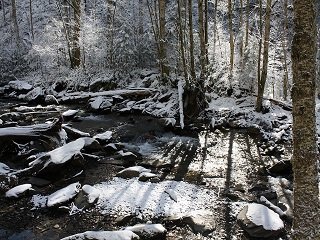 Winter hiking can be a fun and challenging activity, but it’s not without its own potential hazards. One such hazard is the risk that heavy or sudden snowfall will hide your planned trail, leaving you guessing where to take your next steps. Not to worry; today we’ll explore how to locate and maintain your trail heading in the snow.
Winter hiking can be a fun and challenging activity, but it’s not without its own potential hazards. One such hazard is the risk that heavy or sudden snowfall will hide your planned trail, leaving you guessing where to take your next steps. Not to worry; today we’ll explore how to locate and maintain your trail heading in the snow.
You can take measures before heading out to protect yourself against the risk of heavy snow. For instance, it’s smart to make sure everyone in your group has a good, reliable map and an understanding/description of your route. Be sure to study your maps and plot your compass bearings in advance. If you’re venturing into new areas, check in with local rangers for help in planning a safe route, and be sure to follow it as best as you can.
You can also use electronics to help stay on top of the trail. If you’re using a GPS, I’d program several waypoints along the trail, which will help you keep on track if the trail isn’t visible. Furthermore, mountaineers should consider using an altimeter as an extra means of determining their location, just in case.
It’s important to be observant, cautious, and mindful of your surroundings when trekking in places where the trail has been covered with snow. First, you never want to simply follow someone else's tracks, as the person who walked the snow before you may not have known where they were going. Second, you may also need to vary your route somewhat to find better snow conditions and steer clear of risky terrain. Lastly, keep an eye out for potentially dangerous spots, such as cornices, snow-covered bodies of water, snow bridges, hidden holes, tree wells, rock-fall and avalanche zones.
If you should get lost trying to find the trail, the first thing you’ll want to do is stay calm. Stay where you are and evaluate the situation by checking your map, compass, and GPS. If you still can’t reorient yourself to the trail and feel that immediate rescue is in order, make yourself easy to find by making lots of noise. Lastly, avoid giving in to the temptation of splitting up to find help; it’s crucial to stay together.
We tend to rely on the trail at our feet, but what happens when snow erases it from view? The tips outlined above will help keep you safe if this ever happens to you. Take precautions ahead of time by checking with local wildlife authorities, familiarizing yourself with a map of the area, or dotting the route with plenty of waypoints on your GPS. Should you lose track of the trail, don’t panic and rely on your preparations and common sense to help stay safe.








